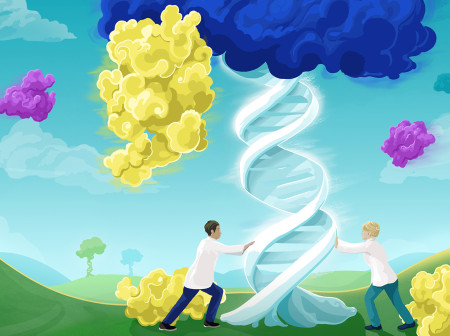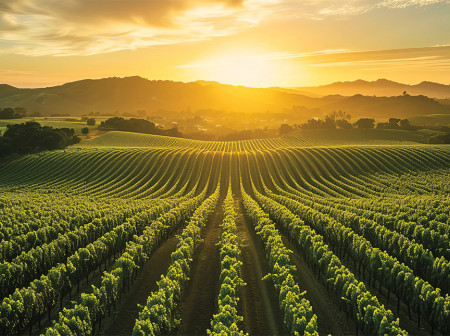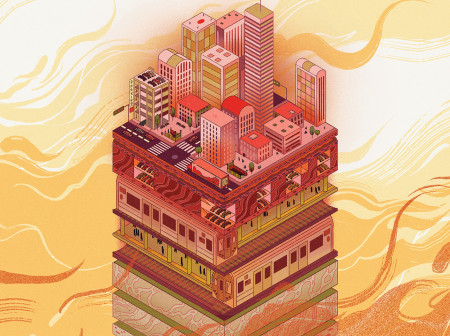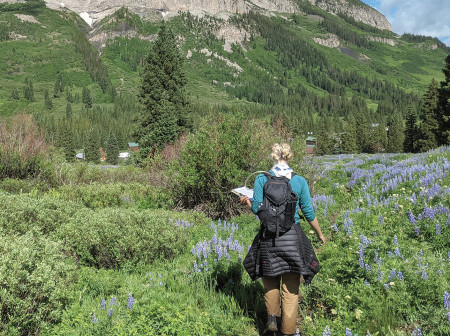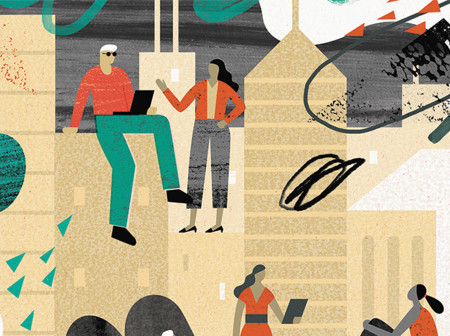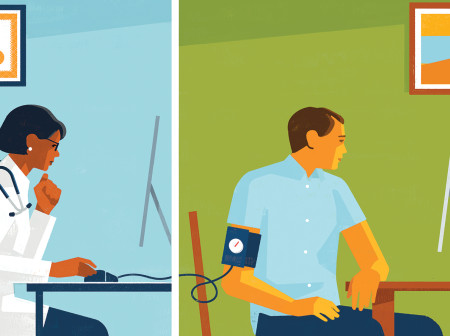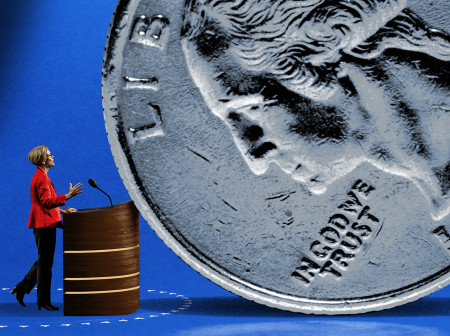Discovery
Northwestern scientists have developed a therapy that combats the progression of neurodegenerative diseases by effectively trapping toxic proteins before they can aggregate into nanofibers that kill neurons. Led by professor Sam Stupp ’77 PhD, the therapy holds promise for Alzheimer’s disease and ALS, or Lou Gehrig’s disease.
Northwestern researchers have invented an implantable device that can track inflammation in the body in real time, akin to a continuous glucose monitor. Inspired by fruit being shaken from tree branches, the device comprises DNA strands that stick to cytokine proteins, shake them off and then grab more proteins, providing real-time data on inflammation levels.
Earth and planetary sciences professor Andy Jacobson leads a team of researchers at Northwestern and the Chicago Botanic Garden investigating the effects of soil additives on agricultural fields.
Many of us amped up our cleaning regimens during the pandemic. But now Erica Hartmann, associate professor of civil and environmental engineering, and dozens of other scientists have issued a warning about the overuse of certain chemicals often found in cleaning products.
Northwestern researchers are the first to discover a link between so-called “underground climate change,” or “subsurface heat islands,” and ground movements beneath urban areas. The researchers found that as the ground warms, it also moves, and this could be a ticking time bomb for urban infrastructure, which is now, quite literally, on shaky ground.
Based on decades of research, professor Viorica Marian shares remarkable benefits of knowing more than one language, from delaying Alzheimer’s disease to improving cognitive performance. Marian’s 2023 book, The Power of Language, will be translated from English to 10 other languages.
In the summer, you can find Elsa Godtfredsen in the Rocky Mountains of Colorado scouting for bees and other pollinators, testing soil moisture levels, gathering seeds and carefully monitoring the health of local alpine wildflowers. A doctoral student in Northwestern’s plant biology and conservation program, she’s been running a multiyear experiment to see how early snowmelt (one sign of a warming planet) will affect wildflowers — and, by extension, the broader ecosystems upon which we all rely.
The alluring trend of moving to a more affordable locale to work remotely as COVID-19 upends our lives will likely not hold up in the long run. That’s because places like Chicago, Los Angeles, New York and other large metropolitan areas have the traits that make them hubs for a strong, innovative economy.
The coronavirus pandemic forced patients and doctors to engage via video and phone — and made virtual visits mainstream. Doctors say video visits and phone check-ins advance the delivery of health care by removing physical barriers, while also increasing privacy and reducing stigma.
Northwestern researcher Galen Bodenhausen says that despite women’s political gains, an economic crisis can spark gender stereotyping.

